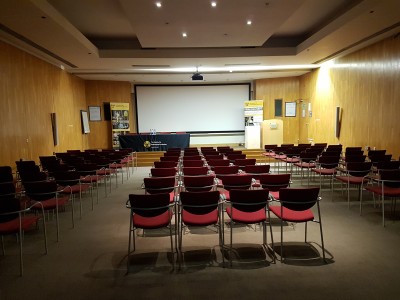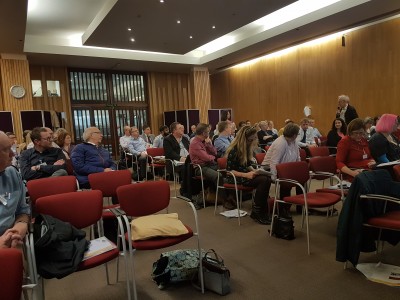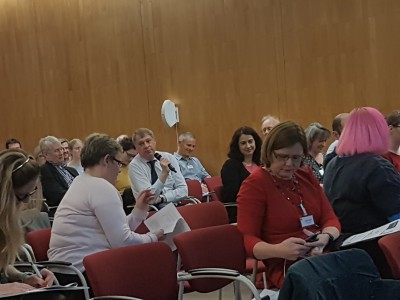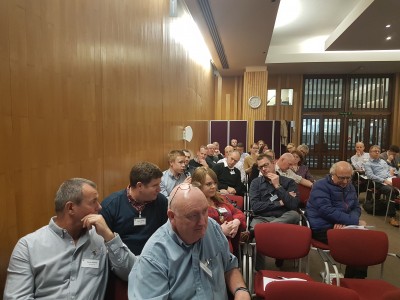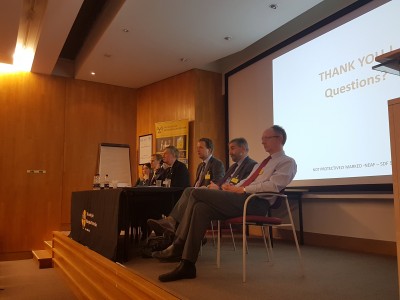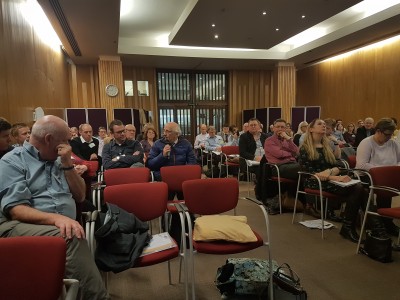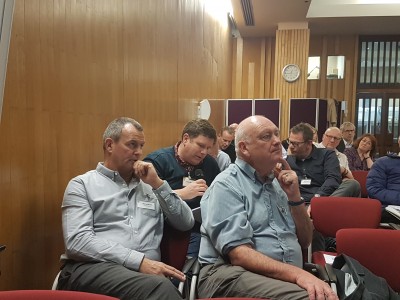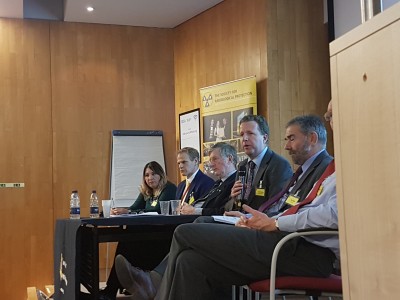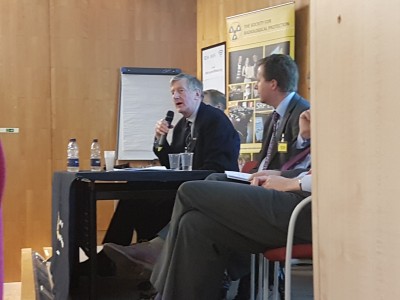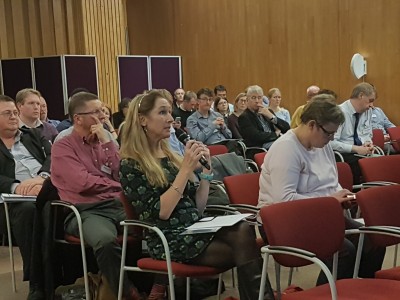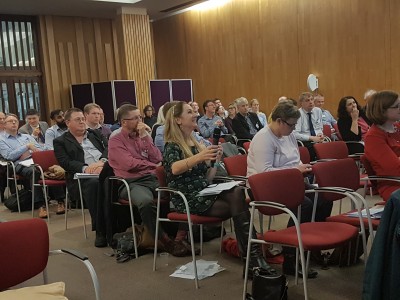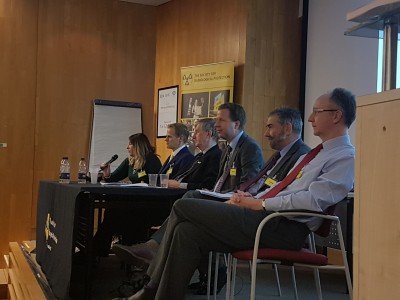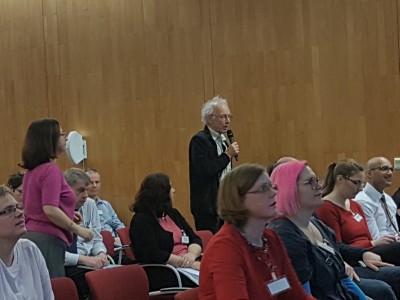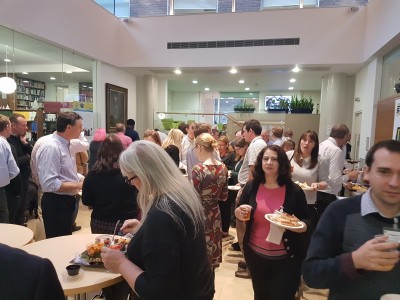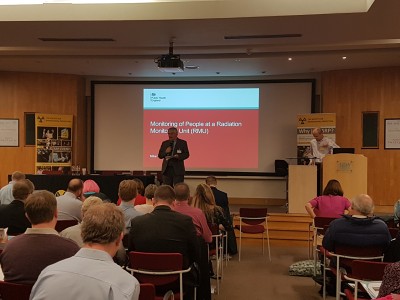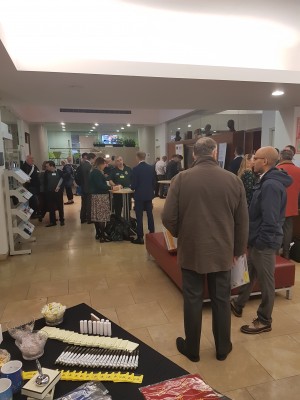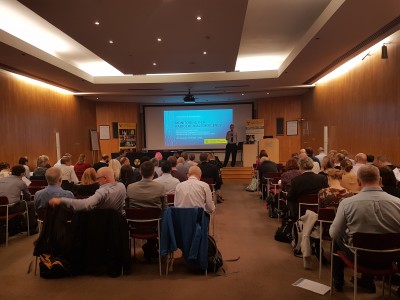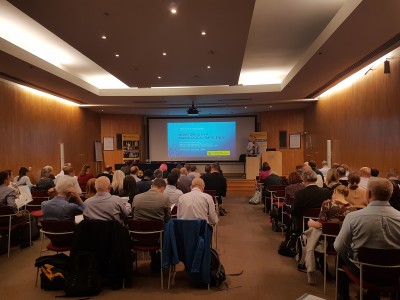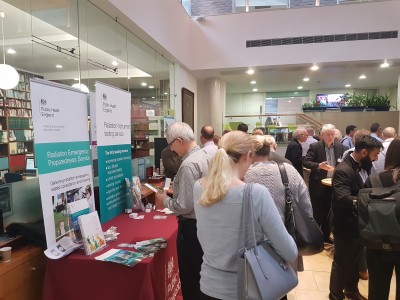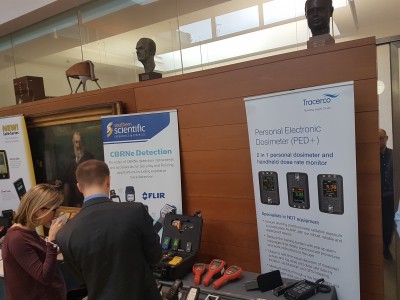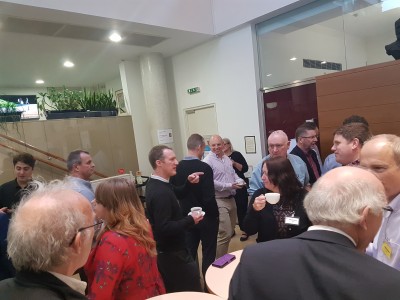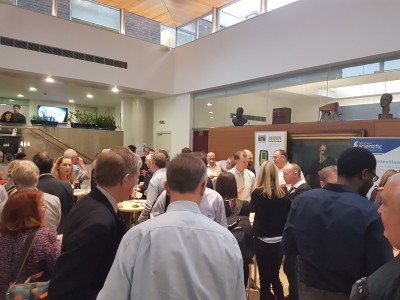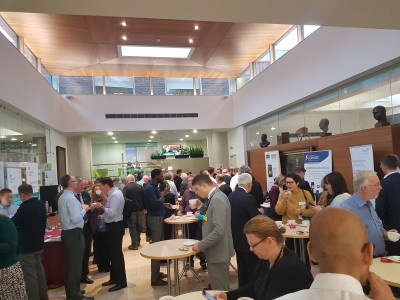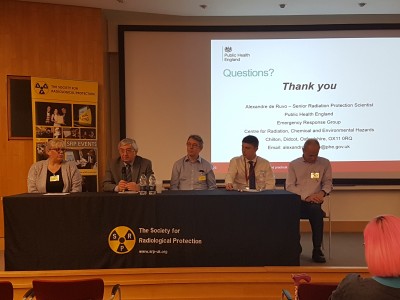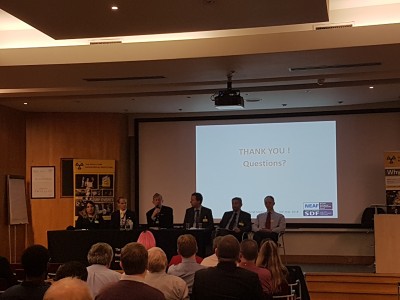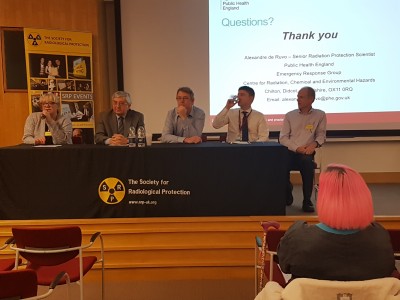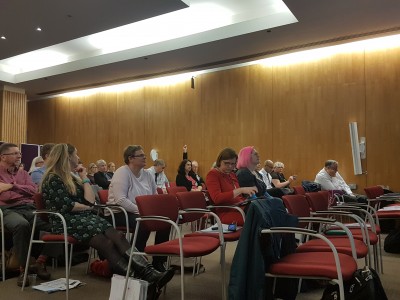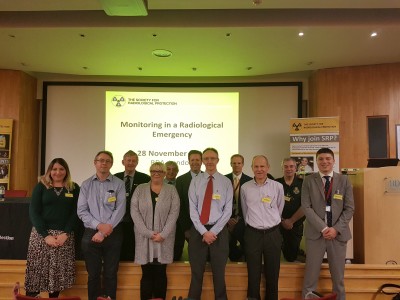A review from the day, photos and presentations are available to view below (you must be logged into MySRP to view the presentations. If you're not a member of SRP but was a paying delegate at the event, please contact
charlene.cartwright@srp-uk.org who will be able to send you the presentations that are available).
Review: Written by Co-Chairs Paul Leonard and John Croft
Around 70 participants enjoyed a wide ranging series of presentations on radiological emergency monitoring. Welcoming the attendees, Paul Leonard (Brunel University) briefly described his work in Government when he helped co-ordinate the UK field work after the Chernobyl accident in 1986. This included details of the sheep, high volume air and whole body monitoring. Paul stressed the importance of needing local knowledge and the willingness of the public to help.
Duncan Cox (Leader of the Radiation Emergency Response Group, Public Health England (PHE)) gave an excellent presentation explaining about the Radiation (Emergency Preparedness and Public Information) Regulations – REPPIR (2001). This is expected to be revised in 2019 with the use of historical site specific meteorological data. REPPIR places a requirement on local authorities and nuclear site operators to co-operate to provide detailed emergency planning zones. PHE has been tasked to review the UK’s current environmental radiation monitoring, sampling and analysis capability against obligations and expectations. While this was welcomed by attendees, concern was expressed about the need for continuous training of radiological personnel and sustainable funding. A new nationwide monitoring system called NERIMNET is expected to be installed in 2019. This combines the existing RIMNET system with the MoD’s NERIMS system.
Other speakers included David Dawson, who spoke about the Ministry of Defence emergency monitoring arrangements. These included dedicated fixed instrumentation at multi-berth submarine establishments and transportable systems for operational berths; plus the deployment of vehicles already fitted with suitable monitoring equipment. Chris Thomas (Food Standards Agency) highlighted the importance of the RIFE (Radioactivity in Food & the Environment) reports that give extensive data across the UK on the current radionuclide levels in foodstuffs and indicator materials. He covered examples of the application of control measures in the UK following Chernobyl and lessons learned from Fukushima. Jess Child (NHS England) highlighted how the NHS has planned to support a radiological emergency and how this fitted within the approach to dealing with commoner emergencies such as chemical and road traffic accidents. Key elements were guidance material and training for front line A&E staff to triage and trigger the need for specialist advice; together with arrangements to manage resources and link into the wider emergency services response. John Skegg (EDF/ Nuclear Emergency Arrangements Forum) explained current approaches to offsite monitoring by the nuclear industry, both in respect of routine monitoring that sets a baseline, and in an emergency situation. He covered the response of NEAF to the post Fukushima Weightman Report: particularly the development of further guidance on monitoring strategies, the maintenance of arrangements for mutual support, interoperability and application of common standards for monitoring.
The morning session concluded with a discussion involving all the speakers. Points raised included the need for advice on the level of radioactivity detected by emergency staff and what action was required when monitoring equipment had a range of 10nGy/hour to 99.9 Gy / hour. How to interpret risk and explain this to provide public reassurance was likely to be challenging and a system of briefing material written before an emergency was thought to be essential.
The Chair of the afternoon session, John Croft (Former Head of Emergency Response, NRPB and HPA) explained how his work had also involved coming to grips with the practicalities of monitoring in the Dales of the North of England and public reassurance after the Chernobyl accident. With respect to the latter he noted that on subsequent visits to organisations in the area it became standard to choose lamb on canteen menus to show faith in the monitoring arrangements! On a more serious note, he identified that national monitoring capabilities had to be able to deal with radiation incidents outside the civil and military nuclear sectors. These could provide significant challenges; as seen in the Goiania accident in Brazil and the poisoning of Alexander Litvinenko in London. He stressed the importance of ongoing programmes of training and exercising of personnel; and the need to maintain a robust and appropriate capability. Whilst individual organisations have a role to play, this could only be achieved by Government recognising the need for such people and facilities.
The first presentation was by Mike Youngman (PHE) on the Monitoring of People at a Radiation Monitoring Unit (RMU). He covered the need for such a capability, and the UK arrangements to cover this; noting that in Goiania 112,000 people were monitored. The equipment that could be deployed included portal monitors for an initial triage, and for those identified as needing further assessment, hand held monitors, mobile Thyroid monitoring and Whole Body Monitors. He noted that whilst RMU planning guidance, adaptable to local circumstances, had been available for some time, it had only been formally adopted in Scotland as a template plan. The last exercise of an RMU plan had been in Lancashire in 2012, from which valuable lessons had been learned.
The next series of presentations were on the monitoring capabilities of the Emergency Services: Fire Service, Police and Ambulance. Alan Sheridan (London Fire Brigade) covered the work of the services DIM unit whose functions are to Detect, Identify and Monitor hazardous materials (including radioactive materials) so as to set-up, monitor and control a safe working environment for first responders. The unit has 3 dedicated and appropriately equipped vans, strategically located within London. All staff wear an EPD which are likely to give the first indication of the presence of radiation. He noted the special considerations for PPE, as the dominant hazard may come from fire or other conventional hazards. Fiona Sharp (AWE) described the RPA function provided to the Police services, together with the capability to deal with Scene of Crime evidence collection. To deal with contaminated evidence there are dedicated facilities to enable safe forensic analysis. Andrew Godfrey covered the work of the London Ambulance CBRN and HART teams (Hazardous Area Response Team). The functions are similar to those of the Fire Brigade, taking an all hazards approach, but with the focus being on able to carry out in situ triaging of patients/victims and where necessary lifesaving treatment, whilst protecting the staff.
The final presentation was from Alexandre de Ruvo (PHE) on the practical experience gained from taking part in Contex18, an EU funded nuclear emergency exercise in Denmark aimed at testing the IAEA – RANET (Response and Assistance Network) process. This was a “live agent” exercise using short lived isotopes in a major military training area. The rural nature of the environment showed that a normal vehicle was not suitable and really one needed an all-terrain vehicle with dedicated storage space. Similarly, PPE, particularly footwear, had to be more robust than in a laboratory. There were also lessons about use of several pieces of monitoring equipment. The ability to deploy a high sensitivity gamma spectrometer at the incident location was found to be very beneficial.
The meeting concluded with a final discussion session, involving all the afternoon’s presenters. One of the areas of concern was the need to have common and consistent ways of reporting monitoring data that are shared: simply reporting counts per second, as has happened in some exercises, is not good enough. It was noted that experience from real incidents, showed that the staff resources needed for monitoring, and the supporting infrastructure, is often underestimated, particularly where public reassurance is a key element. Here it was also noted that the nuclear sector is reducing in size, and with it the pool of suitably experienced monitoring staff that can readily be released from their dedicated site functions in the case of a major emergency elsewhere. Emergency exercises, particularly multi-agency ones, are seen as crucial to maintaining effective response capabilities. Key to this will be maintaining an appropriate level of funding from the various Government departments. Specific interest was shown in an RMU being part of an exercise.
Presentations:
